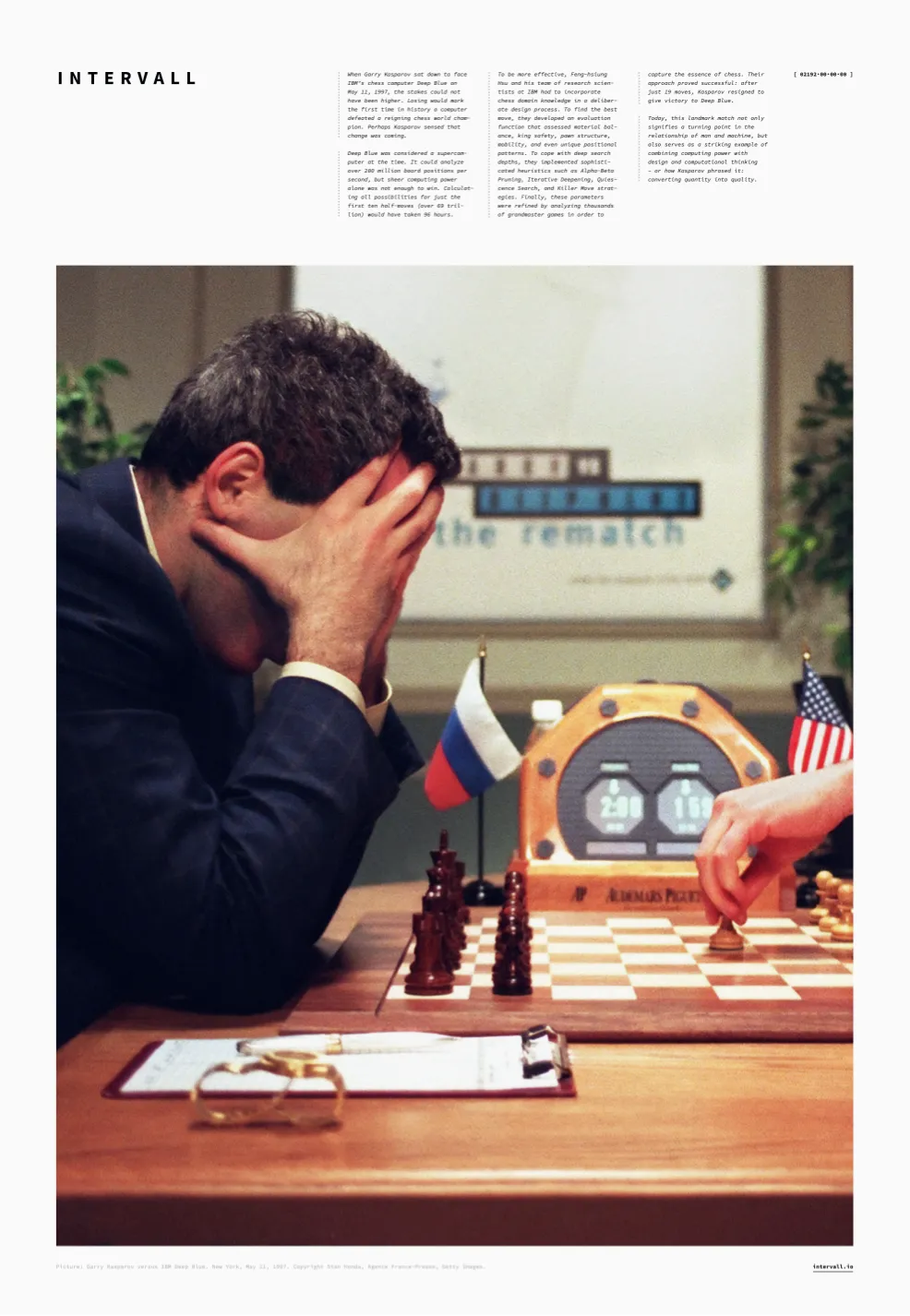[ 0, 2192 ]
When Garry Kasparov sat down to face IBM’s chess computer Deep Blue on May 11, 1997, the stakes could not have been higher. Losing would mark the first time in history a computer defeated a reigning chess world champion. Perhaps Kasparov sensed that change was coming.
Deep Blue was considered a supercomputer at the time. It could analyze over 200 million board positions per second, but sheer computing power alone was not enough to win. Calculating all possibilities for just the first ten half-moves (over 69 trillion) would have taken 96 hours.
To be more effective, Feng-hsiung Hsu and his team of research scientists at IBM had to incorporate chess domain knowledge in a deliberate design process. To find the best move, they developed an evaluation function that assessed material balance, king safety, pawn structure, mobility, and even unique positional patterns. To cope with deep search depths, they implemented sophisticated heuristics such as Alpha-Beta Pruning, Iterative Deepening, Quiescence Search, and Killer Move strategies. Finally, these parameters were refined by analyzing thousands of grandmaster games in order to capture the essence of chess. Their approach proved successful: after just 19 moves, Kasparov resigned to give victory to Deep Blue.
Today, this landmark match not only signifies a turning point in the relationship of man and machine, but also serves as a striking example of combining computing power with design and computational thinking – or how Kasparov phrased it: converting quantity into quality.
